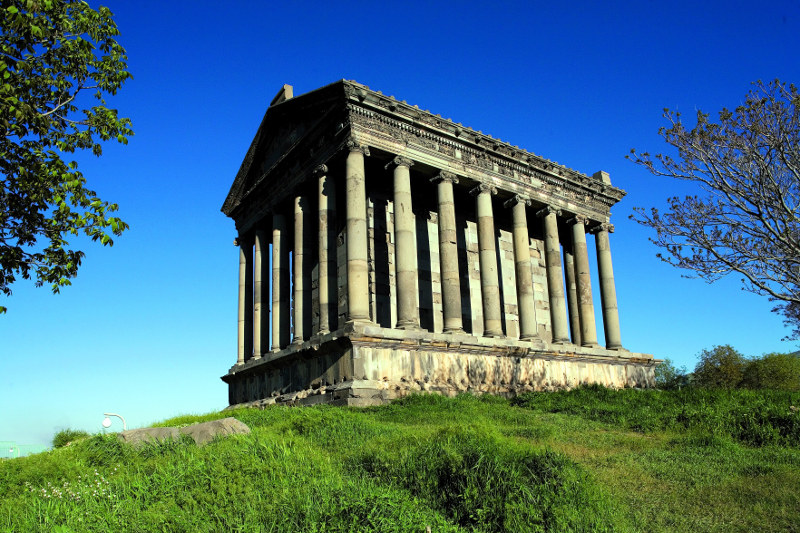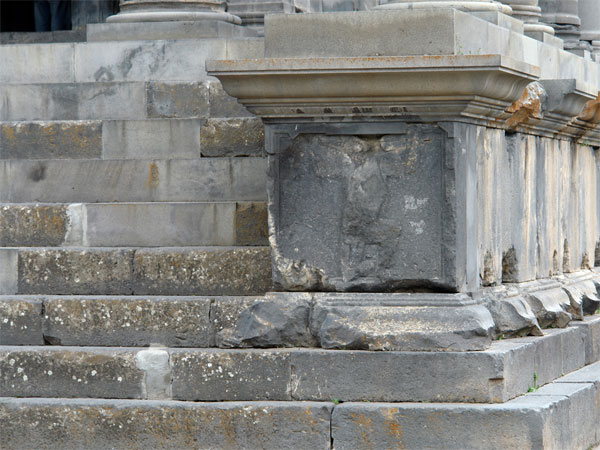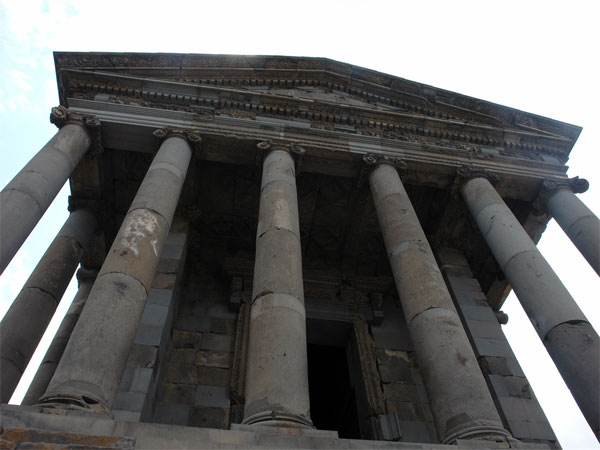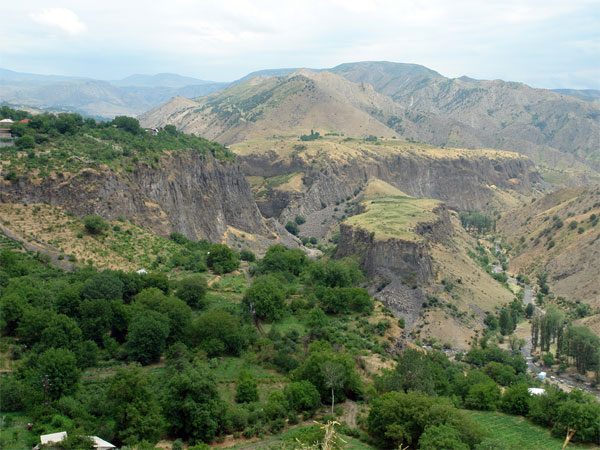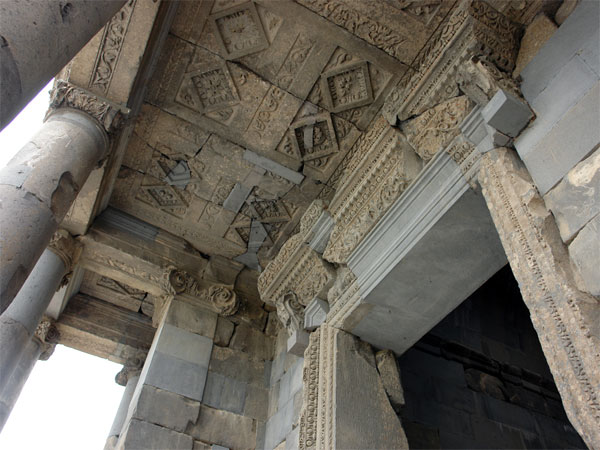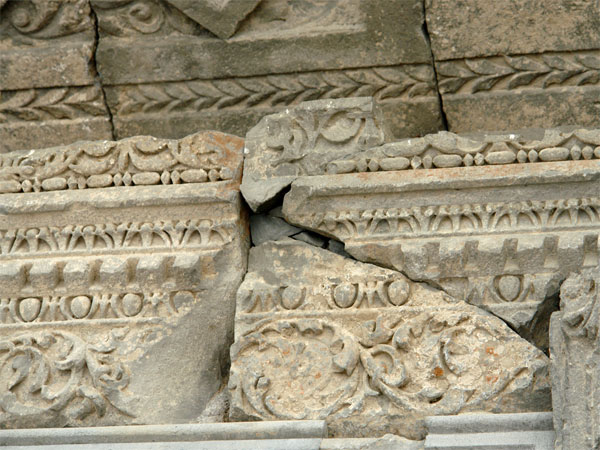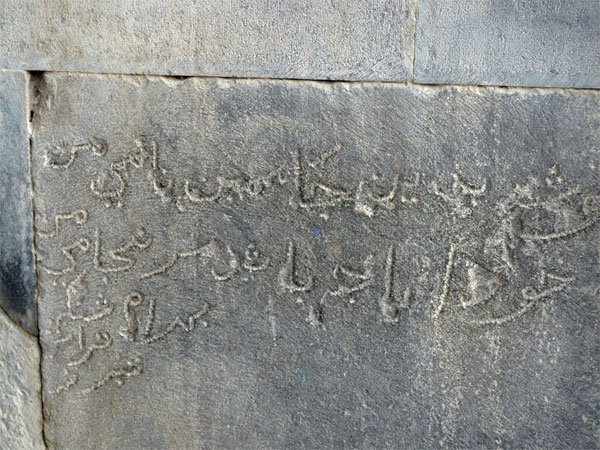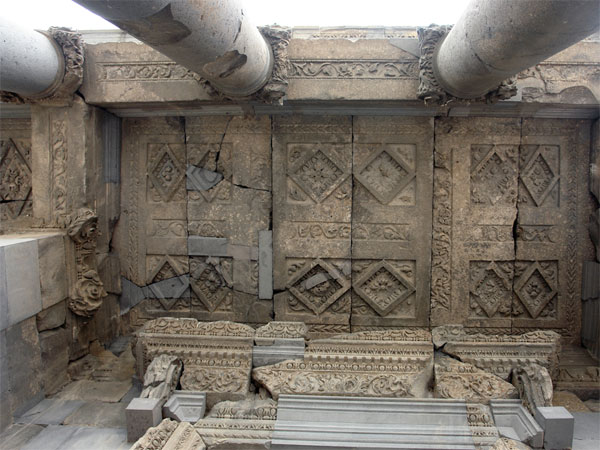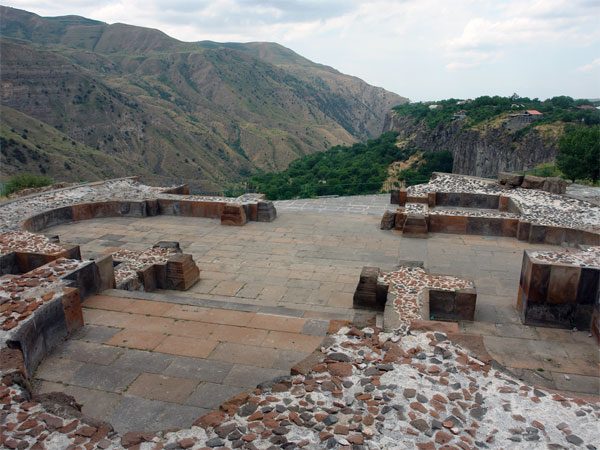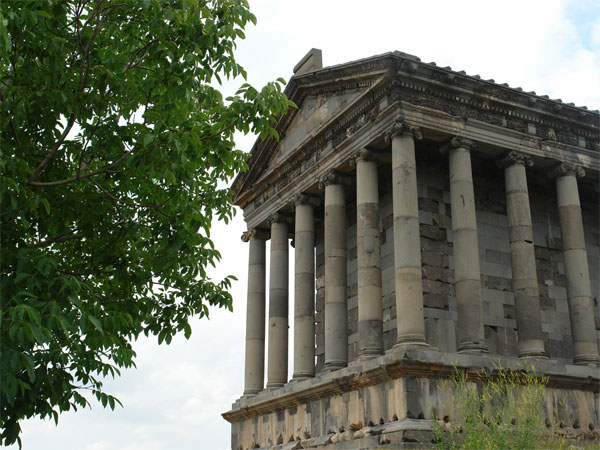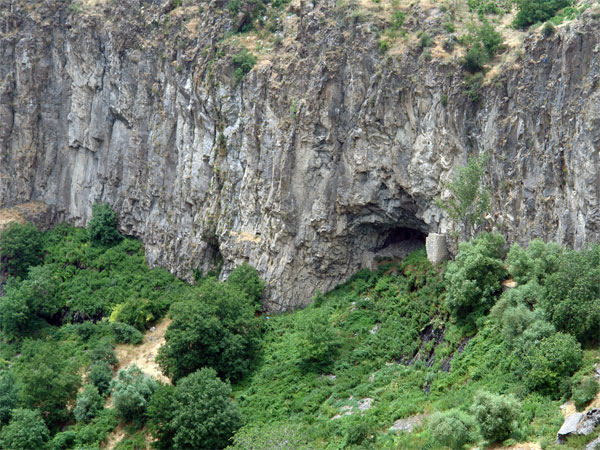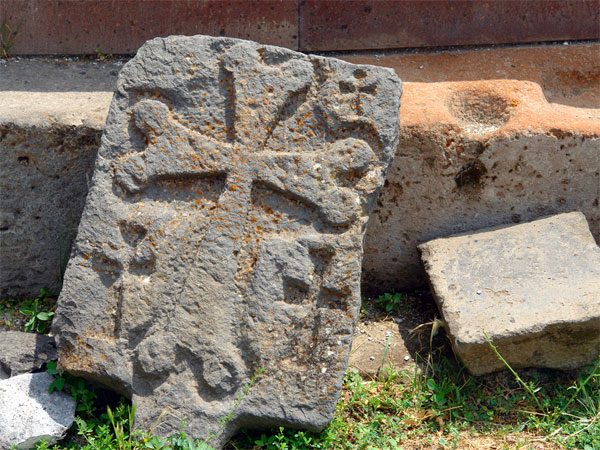-
Garni Temple
The fortress of Garni is situated in the village of the same name in the Kotayk District. That was a mighty fortress well known from chronicles (Cornelius Tacitus, Movses Khorenatsi, etc.). The structures of Garni combine elements of Hellenistic and national culture, which is an evidence of antique influences and the distinctive building traditions of the Armenian people. Artistic merits and uniqueness of its monuments place Garni among outstanding creations of architecture of world importance.
The structures of the fortress of Garni are in perfect harmony with the surrounding nature. The fortress is situated in a picturesque mountain locality and commands a broad panorama of orchards, fields and mountain slopes covered with motley carpets of varicoloured grasses, of the jagged and precipitous canyon of the Azat River.
Strategically, the place for building this fortress was very cleverly chosen. In very ancient times (the third millennium BC.) a cyclopic fortress existed there. According to a cuneiform record found on the territory of Garni, the fortress was conquered by Argishti I, the king of Urartu, in the first half of the 8th century B.C. In the epoch of the Armenian rulers of the Ervandids, Artashesids and Arshakids dynasties (since the third century B.C. to the fourth century AD). Garni was a summer residence of the kings and the place where their troops were stationed.
The fortress of Garni stands on a triangular cape which dominates the locality and juts into the river. A deep gorge and steep mountain slopes serve as a natural impregnable obstacle, and therefore the fortress wall was put up only on the side of the plain. It was put together of large square-shaped slabs of basalt placed flat on top of each other without mortar and fastened together with iron cramps sealed with lead. The evenly spaced rectangular towers and the concave shape of the middle of the most vulnerable northern wall, which increased the effectiveness of flank shooting, added much to the defense capacity of the fortress and, at the same time, enhanced its artistic merits.
The palace complex included several disconnected buildings: a temple, a presence chamber, a columned tall, a residential block, a bath-house, etc. They were situated around the vast main square of the fortress, in is southern part, away from the entranceway, where they formed all ensemble. In the northern part there probably were the premises of the service staff, the king’s guards and the garrison.
The cape top was crowned with a temple which overlooked the square by its main northern facade. The temple, the artistic center of the complex, is on the central axis passing through the fortress’ gate.
The temple was built in the second half of the first century B.C. and dedicated to a heathen god, probably to Mitra, the god of the sun, whose figure stood in the depth of the sanctuary. After Christianity had been proclaimed the state religion in Armenia in 301, the temple was probably used as a summer residence of the kings. A chronicle describes it as ‘‘a house of coolness‘‘.
In its style, the temple, a six-column periptere, resembles similar structures in Asia Minor (Thermes, Sagala, Pergam), Syria (Baalbek) and Rome. Its architectural shapes are basically-Hellenistic but local traditions also show in it. It should be noted that a rectangle-based religious edifice with columns and a fronton was known on the territory of the Armenian upland back in the epoch of the Urarts.
A two-storey palace situated to the west of the temple was another edifice distinguished for its artistic merits and size (about 15 by 40m).
The bath-house is situated in the northern part of the square, at an angle to the residential block. Built in the third century, it comprised no less than five premises serving various purposes. The first room from the east was a dressing room, the second one, a cold water bathroom, the third and fourth ones, warm and hot water bathrooms respectively. The bathhouse had a water reservoir, with a heating room in the basement. The floors were faced with baked bricks covered with a layer of polished stucco. They rested on round pillars and were heated from below with hot air and smoke which came to the underfloor space from the heater.
A notion of the interior decoration can be obtained from the floors with remnants of stone mosaics of 15 hues. Of special interest is the soft-colour mosaic of the dressing room floor dating back to the 3rd-4th centuries, an outstanding example of monumental painting in central Armenia. The theme of the mosaic decoration of the 2.91 by 3.14m floor draws upon Greek mythology.
Against the light-green background, representing the sea, there are inlaid pictures of the gods of the Ocean and the Sea, fishes, Nereids and ichthyocentauri. A wide pink hand runs the perimeter of the mosaic. The tonal transitions of the water surface create the impression of wave movement. Greek inscriptions name the deities and Nereids which are skillfully executed by craftsmen who obviously had a good knowledge of the anatomy. Human figures with faces of Oriental type are depicted in a most specific manner. A Greek inscription over the heads of the gods says: "Work and gain nothing".
-

